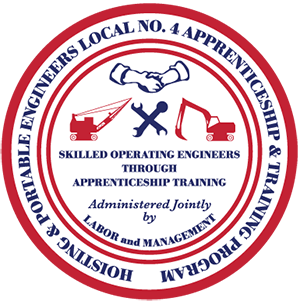Greetings Brothers and Sisters,
At the end of a relatively mild winter, I know we are all looking forward to a warm, prosperous spring. With the COVID-19 numbers trending in the right direction and the vaccine being distributed, we all have good reason to be optimistic.
Despite the relatively mild temperatures, there were above average snowfall totals for the month of February. This high snowfall total, coupled with the spring rain, means one thing in New England. We are entering mud season. While many people’s main concern is the mess this will make in their homes, Operating Engineers have another concern in mind. Ground Conditions.
In the crane world, OSHA addresses ground conditions in Subpart CC. They state that “ground conditions” means the ability of the ground to support the equipment, including slope, compaction, and firmness. They define “supporting materials” as blocking, mats cribbing, marsh buggies (in marshes/wetlands), or similar supporting materials or devices. They also state that blocking material must be of the size, amount, condition, and method of stacking sufficient to sustain the loads and maintain stability.
Cranes must not be assembled or used unless “ground conditions are firm, drained, and graded to a sufficient extent so that, in conjunction (if necessary) with the use of supporting materials, the equipment manufacturer’s specifications for adequate support and degree of level of the equipment are met.” Span blocking, blocking with space in between the pieces, is forbidden. It is recommended that blocking under the outrigger float should be three times larger than the float.
In excavation, OSHA’s Subpart P does not directly address ground conditions. They do specify that prior to digging, the contractor should locate and identify all underground utilities that may be encountered. Operators of wheeled equipment should be especially careful on muddy job sites. It is quite a scary experience when the front tire sinks into a deep mudhole!!
In the foundation drill rig field, the ADSC addresses ground conditions by stating a working platform must be used. They define a “working platform” as typically constructed from compacted soil, geotextile fabric, crushed rock, crane mats, or a combination of each. They add that a key factor of the platform design is the maximum bearing pressure generated by the foundation drill rig. They remind us that it’s not just the ground bearing pressure generated from the machine weight, but also the forces generated during operational activities.
In closing, I would like to wish you all a safe and prosperous season. Please do not hesitate to call the Training Center for any licensure or safety questions.

Thomas McEvoy
Co-Safety Officer
